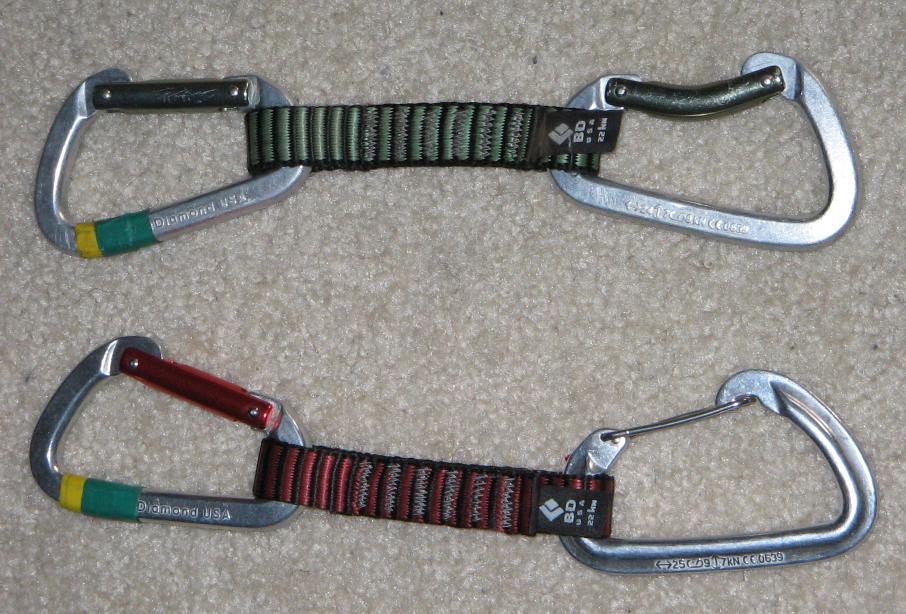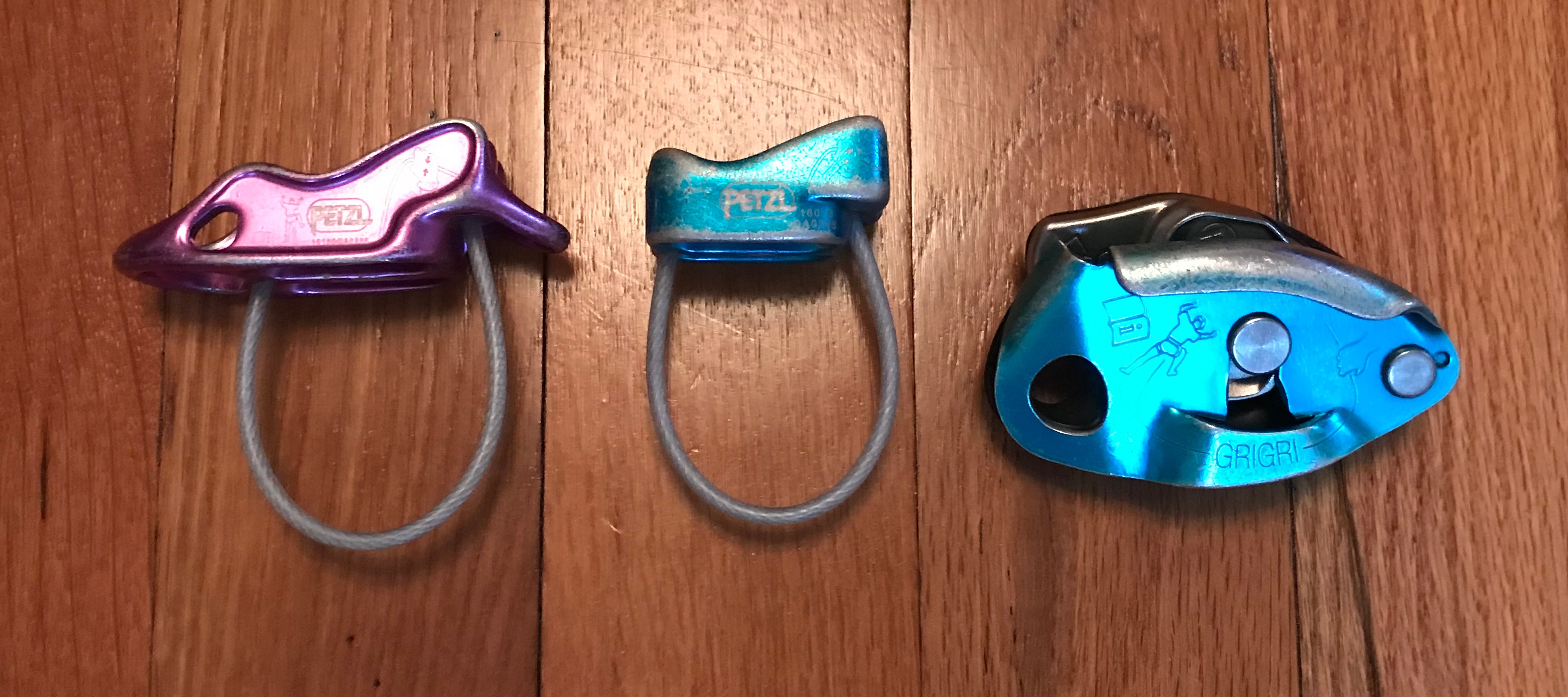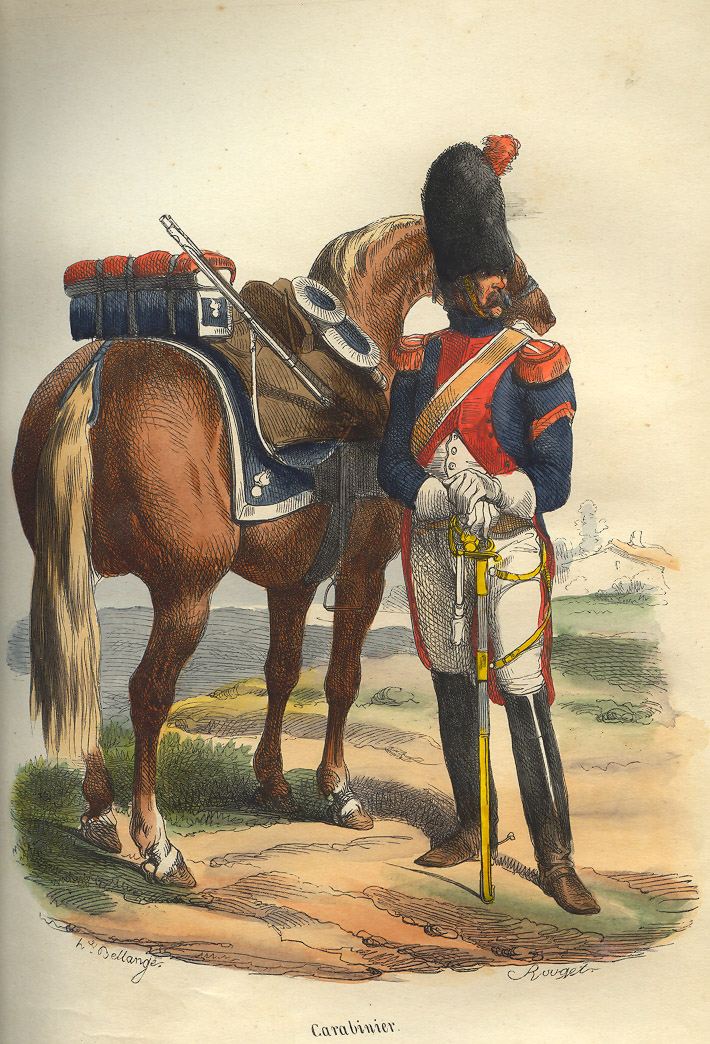|
Carabiner
A carabiner or karabiner () is a specialized type of shackle, a metal loop with a spring-loaded gate used to quickly and reversibly connect components, most notably in safety-critical systems. The word is a shortened form of ''Karabinerhaken'' (or also short ''Karabiner''), a German phrase for a "spring hook" used by a carbine rifleman, or carabinier, to attach his carabin to a belt or bandolier. Use Carabiners are widely used in rope-intensive activities such as climbing, fall arrest systems, arboriculture, caving, sailing, hot air ballooning, rope rescue, construction, industrial rope work, window cleaning, whitewater rescue, and acrobatics. They are predominantly made from both steel and aluminium. Those used in sports tend to be of a lighter weight than those used in commercial applications and rope rescue. Often referred to as carabiner-style or as mini-biners, carabiner keyrings and other light-use clips of similar style and design have also become popular. Most ar ... [...More Info...] [...Related Items...] OR: [Wikipedia] [Google] [Baidu] |
Quickdraw
A quickdraw (also known as an extender) is a piece of climbing equipment used by rock and ice climbers to allow the climbing rope to run freely through protection such as a bolt anchors or other traditional gear while leading. A quickdraw consists of two carabiner A carabiner or karabiner () is a specialized type of shackle, a metal loop with a spring-loaded gate used to quickly and reversibly connect components, most notably in safety-critical systems. The word is a shortened form of ''Karabinerhaken'' ...s connected by a semi-rigid material (sometimes called the "dogbone"). One carabiner has a straight gate and connects to an anchoring device. The other carabiner is for the climbing rope, and uses a bent gate. Quickdraws are manufactured with either a solid carabiner gate or a wire carabiner gate for its lighter weight. Use A quickdraw is a specific type of runner. Runners are used by rock and ice climbers to extend the distance between an anchoring device and the ... [...More Info...] [...Related Items...] OR: [Wikipedia] [Google] [Baidu] |
Munter Hitch
The Munter hitch, also known as the Italian hitch, mezzo barcaiolo or the crossing hitch, is a simple adjustable knot, commonly used by climbers, cavers, and rescuers to control friction in a life-lining or belay system. To climbers, this hitch is also known as HMS, the abbreviation for the German term ''Halbmastwurfsicherung'', meaning ''half clove hitch belay''. This technique can be used with a special "pear-shaped" HMS locking carabiner, or any locking carabiner wide enough to take two turns of the rope. In the late 1950s, three Italian climbers, Mario Bisaccia, Franco Garda and Pietro Gilardoni developed a new belay technique called the "Mezzo Barcaiolo (MB) meaning; "a half of the knot, which is used by the sailors to secure a boat to a bollard in a harbor." The "MB" came to be known as the Munter hitch after Werner Munter, a Swiss mountain guide popularized its use in mountaineering in the 1970s. This hitch was studied and then promoted for its use in the mountains (bein ... [...More Info...] [...Related Items...] OR: [Wikipedia] [Google] [Baidu] |
Belay Device
A belay device is a mechanical piece of climbing equipment used to control a rope during belaying. It is designed to improve belay safety for the climber by allowing the belayer to manage their duties with minimal physical effort. With the right belay device, a small, weak climber can easily arrest the fall of a much heavier partner. Belay devices act as a friction brake, so that when a climber falls with any slack in the rope, the fall is brought to a stop. Typically, when the rope is held outward, away from the body, it moves relatively freely, so the belayer can take up or pay out slack. When the rope is brought backward, to the side of the body, the rope is forced into tight bends and rubs against the device and/or against itself, allowing the belayer to arrest the descent of a climber in the case of a fall. This rubbing slows the rope, but also generates heat. Some types of belay devices can arrest a fall without the belayer taking any action, while others require the belayer ... [...More Info...] [...Related Items...] OR: [Wikipedia] [Google] [Baidu] |
Carabinier
A carabinier (also sometimes spelled carabineer or carbineer) is in principle a soldier armed with a carbine. A carbiniere is a carabiniere musket or rifle and were commonplace by the beginning of the Napoleonic Wars in Europe. The word is derived from the identical French word ''carabinier''. Historically, carabiniers were generally (but not always) horse soldiers. The carbine was considered a more appropriate firearm for a horseman than a full-length musket, since it was lighter and easier to handle while on horseback. Light infantry sometimes carried carbines because they are less encumbering when moving rapidly, especially through vegetation, but in most armies the tendency was to equip light infantry with longer-range weapons such as rifles rather than shorter-range weapons such as carbines. In Italy and Spain, carbines were considered suitable equipment for soldiers with policing roles, so the term ''carabinier'' evolved to sometimes denote gendarmes and border guards ... [...More Info...] [...Related Items...] OR: [Wikipedia] [Google] [Baidu] |
Lead Climbing
Lead climbing is a climbing style, predominantly used in rock climbing. In a roped party one climber has to take the lead while the other climbers follow. The ''lead climber'' wears a harness attached to a climbing rope, which in turn is connected to the other climbers below the lead climber. While ascending the route, the lead climber periodically connects the rope to protection equipment for safety in the event of a fall. This protection can consist of permanent bolts, to which the climber clips quickdraws, or removable protection such as nuts and cams. One of the climbers below the lead climber acts as a belayer. The belayer gives out rope while the lead climber ascends and also stops the rope when the lead climber falls or wants to rest. A different style than lead climbing is top-roping. Here the rope is preattached to an anchor at the top of a climbing route before the climber starts their ascent. Lead climbing as a discipline of sport climbing debuted at the 2020 Summ ... [...More Info...] [...Related Items...] OR: [Wikipedia] [Google] [Baidu] |
Rappelling
Abseiling ( ; ), also known as rappelling ( ; ), is the controlled descent of a steep slope, such as a rock face, by moving down a rope. When abseiling the person descending controls their own movement down the rope, in contrast to lowering off in which the rope attached to the person descending is paid out by their belayer. This technique is used by climbers, mountaineers, cavers, canyoners, search and rescue and rope access technicians to descend cliffs or slopes when they are too steep and/or dangerous to descend without protection. Many climbers use this technique to protect established anchors from damage. Rope access technicians also use this as a method to access difficult-to-reach areas from above for various industrial applications like maintenance, construction, inspection and welding. To descend safely, abseilers use a variety of techniques to increase the friction on the rope to the point where it can be controlled comfortably. These techniques range f ... [...More Info...] [...Related Items...] OR: [Wikipedia] [Google] [Baidu] |
Belaying
Belaying is a variety of techniques climbers use to create friction within a climbing system, particularly on a climbing rope, so that a falling climber does not fall very far. A climbing partner typically applies tension at the other end of the rope whenever the climber is not moving, and removes the tension from the rope whenever the climber needs more rope to continue climbing. The term "belay" also means the place where the belayer is anchored; this is typically the ground or a ledge, but may be a ''hanging belay'', where the belayer themself is suspended from an anchor in the rock. How it works Belaying is a critical part of the climbing system. A correct belaying method lets the belayer hold the entire weight of the climber with relatively little force, and easily arrest even a long fall. In its simplest form, a belay consists of merely a rope that runs from a climber to another person (the belayer) who can stop the climber's fall. In the modern day, most climbers us ... [...More Info...] [...Related Items...] OR: [Wikipedia] [Google] [Baidu] |
Kilonewton
The newton (symbol: N) is the unit of force in the International System of Units (SI). It is defined as 1 kg⋅m/s, the force which gives a mass of 1 kilogram an acceleration of 1 metre per second per second. It is named after Isaac Newton in recognition of his work on classical mechanics, specifically Newton's second law of motion. Definition A newton is defined as 1 kg⋅m/s (it is a derived unit which is defined in terms of the SI base units). One newton is therefore the force needed to accelerate one kilogram of mass at the rate of one metre per second squared in the direction of the applied force. The units "metre per second squared" can be understood as measuring a rate of change in velocity per unit of time, i.e. an increase in velocity by 1 metre per second every second. In 1946, Conférence Générale des Poids et Mesures (CGPM) Resolution 2 standardized the unit of force in the MKS system of units to be the amount needed to accelerate 1 kilogram of mass at the rate o ... [...More Info...] [...Related Items...] OR: [Wikipedia] [Google] [Baidu] |
Kilonewton
The newton (symbol: N) is the unit of force in the International System of Units (SI). It is defined as 1 kg⋅m/s, the force which gives a mass of 1 kilogram an acceleration of 1 metre per second per second. It is named after Isaac Newton in recognition of his work on classical mechanics, specifically Newton's second law of motion. Definition A newton is defined as 1 kg⋅m/s (it is a derived unit which is defined in terms of the SI base units). One newton is therefore the force needed to accelerate one kilogram of mass at the rate of one metre per second squared in the direction of the applied force. The units "metre per second squared" can be understood as measuring a rate of change in velocity per unit of time, i.e. an increase in velocity by 1 metre per second every second. In 1946, Conférence Générale des Poids et Mesures (CGPM) Resolution 2 standardized the unit of force in the MKS system of units to be the amount needed to accelerate 1 kilogram of mass at the rate o ... [...More Info...] [...Related Items...] OR: [Wikipedia] [Google] [Baidu] |
Caving
Caving – also known as spelunking in the United States and Canada and potholing in the United Kingdom and Ireland – is the recreational pastime of exploring wild cave systems (as distinguished from show caves). In contrast, speleology is the scientific study of caves and the cave environment.Caving in New Zealand (from Te Ara: The Encyclopedia of New Zealand, Accessed 2012-11.) The challenges involved in caving vary according to the cave being visited; in addition to the total absence of light beyond the entrance, negotiating pitches, squeezes, [...More Info...] [...Related Items...] OR: [Wikipedia] [Google] [Baidu] |
Carbine
A carbine ( or ) is a long gun that has a barrel shortened from its original length. Most modern carbines are rifles that are compact versions of a longer rifle or are rifles chambered for less powerful cartridges. The smaller size and lighter weight of carbines make them easier to handle. They are typically issued to high-mobility troops such as special operations soldiers and paratroopers, as well as to mounted, artillery, logistics, or other non-infantry personnel whose roles do not require full-sized rifles, although there is a growing tendency for carbines to be issued to front-line soldiers to offset the increasing weight of other issued equipment. An example of this is the U.S. Army's M4 carbine, which is standard issue. Etymology The name comes from its first users — cavalry troopers called "carabiniers", from the French ''carabine'', from Old French ''carabin'' (soldier armed with a musket), whose origin is unclear. One theory connects it to an "ancient engine of w ... [...More Info...] [...Related Items...] OR: [Wikipedia] [Google] [Baidu] |
Shackle
A shackle (or shacklebolt), also known as a gyve, is a U-shaped piece of metal secured with a clevis pin or bolt across the opening, or a hinged metal loop secured with a quick-release locking pin mechanism. The term also applies to handcuffs and other similarly conceived restraint devices that function in a similar manner. Shackles are the primary connecting link in all manner of rigging systems, from boats and ships to industrial crane rigging, as they allow different rigging subsets to be connected or disconnected quickly. A shackle is also the similarly shaped piece of metal used with a locking mechanism in padlocks. A carabiner is a type of shackle used in mountaineering. Types Bow shackle With a larger "O" shape to the loop, this shackle can take loads from many directions without developing as much side load. However, the larger shape to the loop does reduce its overall strength. Also referred to as an anchor shackle. D-shackle Also known as a chain shackle, D-sh ... [...More Info...] [...Related Items...] OR: [Wikipedia] [Google] [Baidu] |










.jpg)
